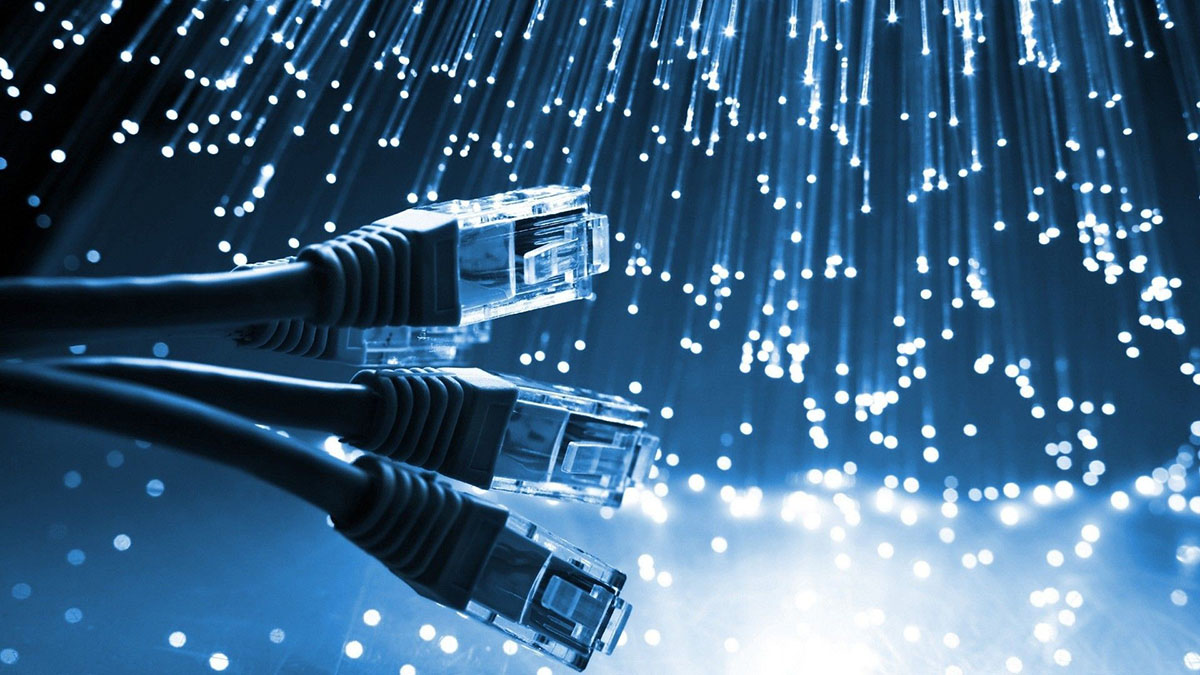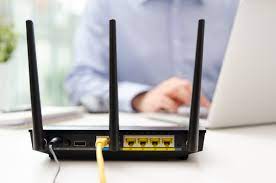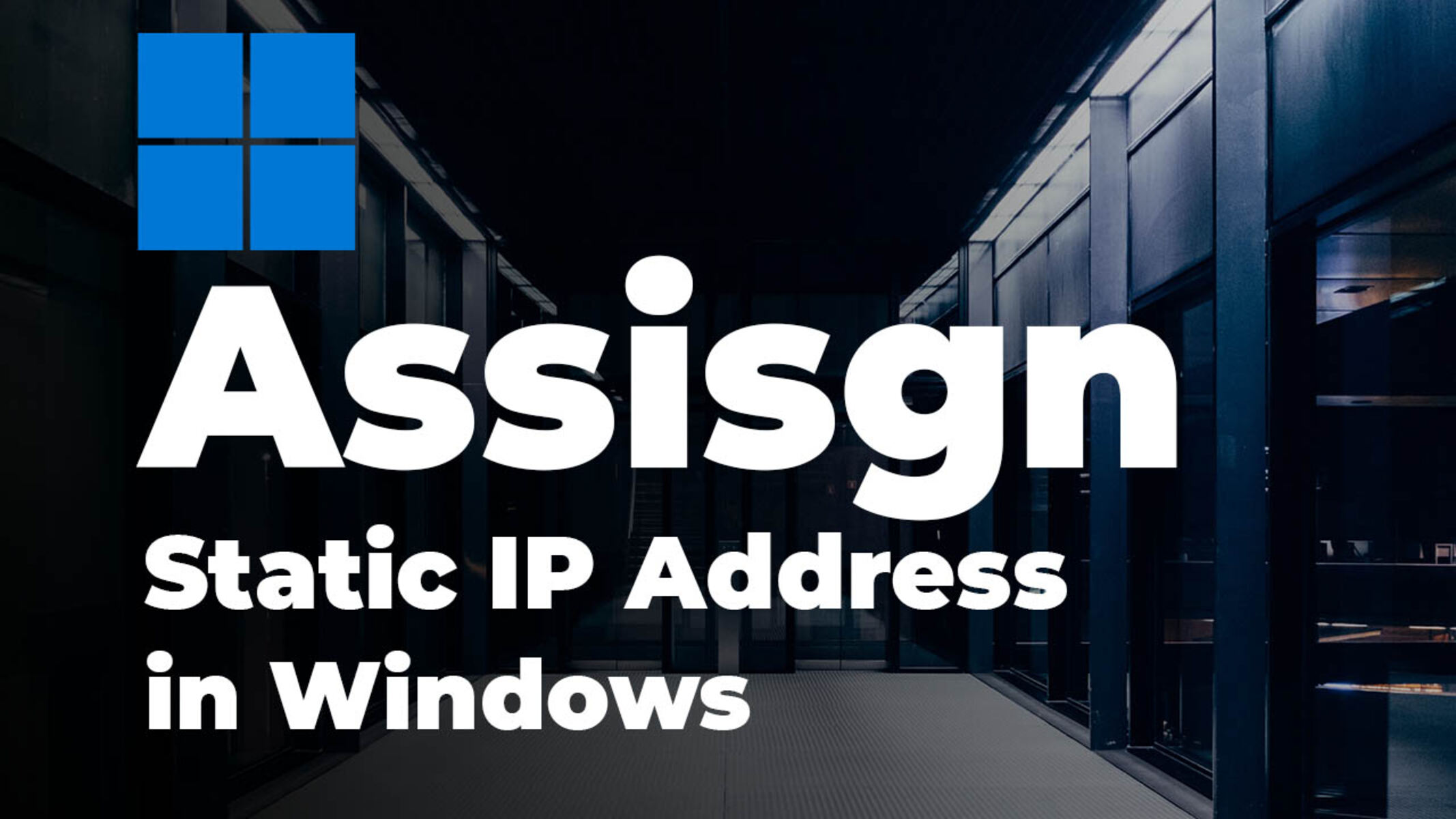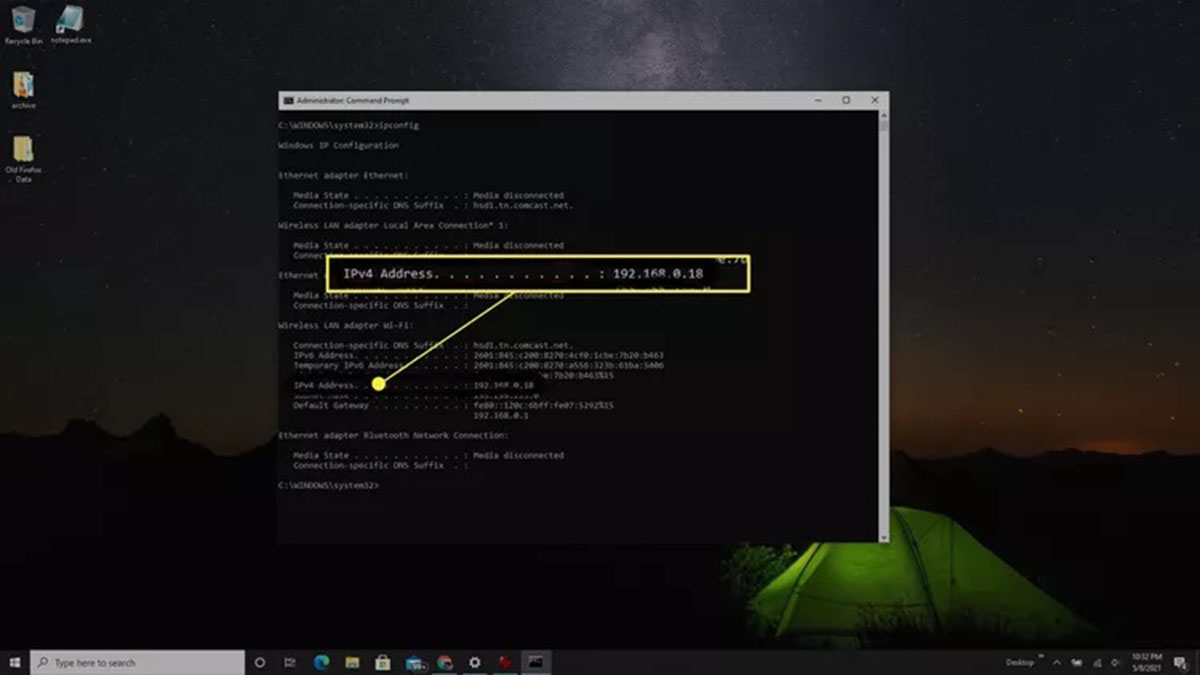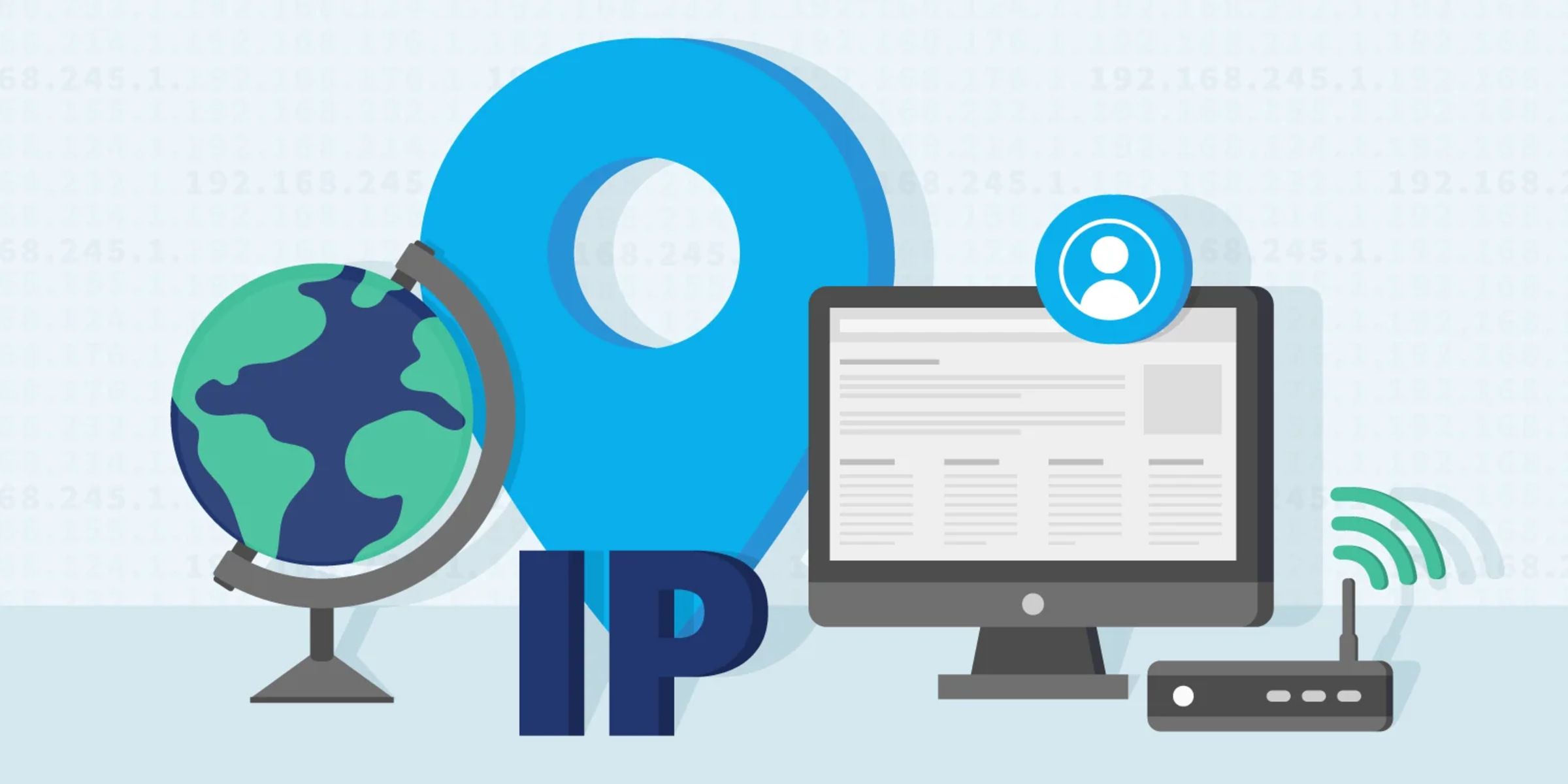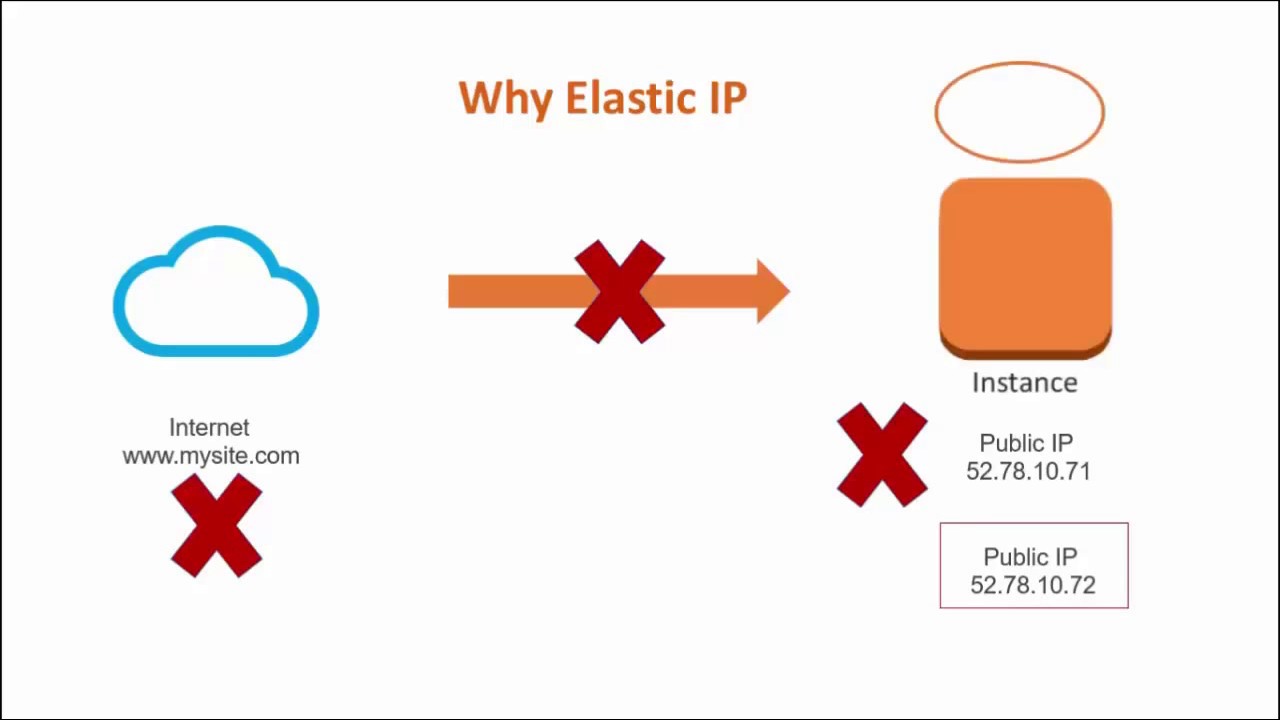Introduction
An IP address is a unique numerical label assigned to each device connected to a computer network. It serves as the identifier that enables devices to communicate with each other over the internet. There are two types of IP addresses – dynamic IP addresses and static IP addresses.
A dynamic IP address is automatically assigned to a device by the network’s Dynamic Host Configuration Protocol (DHCP) server. This type of IP address is temporary and can change each time the device connects to the network. On the other hand, a static IP address is manually assigned to a device and remains constant, providing a fixed location for accessing network resources. In this article, we will focus on understanding what a static IP address is and why it might be beneficial to have one.
A static IP address is essentially a permanent address that is assigned to a specific device. Unlike dynamic IP addresses that can change, static IP addresses remain the same regardless of the device’s connection status. This means that each time the device connects to the network, it will retain the same IP address.
Static IP addresses are commonly used for devices that require consistent accessibilities, such as servers, routers, and printers. By having a fixed IP address, these devices can be easily located and accessed by other devices within the network or even from the internet. Additionally, static IP addresses are often utilized by businesses that require secure remote access to their networks or host services that need to maintain a reliable connection.
Next, we will explore in more detail the benefits of having a static IP address and why it might be necessary for certain situations.
What is an IP address?
An IP address, or Internet Protocol address, is a unique numerical label assigned to each device connected to a computer network. It serves as the device’s identifier, allowing it to send and receive data over the internet or any other network.
IP addresses are composed of a series of numbers, separated by periods, such as “192.168.0.1”. This format, known as IPv4 (Internet Protocol version 4), is the most widely used. However, with the growth of internet-connected devices, IPv6 (Internet Protocol version 6), which uses a longer address format, is also becoming more prevalent.
IP addresses can be compared to postal addresses for devices. Just as a physical address enables mail to be delivered to a specific location, an IP address allows data to be sent and received by a particular device on the network. Each IP address is associated with a specific device, enabling efficient communication between devices within a network or across the internet.
There are two primary types of IP addresses: public and private. Public IP addresses are assigned by Internet Service Providers (ISPs) and are unique globally, allowing devices to communicate with each other over the internet. Private IP addresses are used within private networks, such as local area networks (LANs) or home networks. These addresses are not visible or accessible from the internet and are assigned by the network administrator.
IP addresses play a crucial role in facilitating the flow of information between devices and networks. They enable devices to connect, communicate, and share resources over the internet securely and efficiently. Whether it is browsing the web, sending emails, or streaming content, IP addresses are the backbone of modern network communication.
Next, we will delve into the differences between dynamic IP addresses and static IP addresses, and why having a static IP address can be advantageous in certain scenarios.
What is a dynamic IP address?
A dynamic IP address is an IP address that is assigned to a device automatically by a network’s Dynamic Host Configuration Protocol (DHCP) server. Unlike static IP addresses which remain constant, dynamic IP addresses can change each time a device connects to the network.
Dynamic IP addresses are commonly used in residential settings and by internet service providers (ISPs) to efficiently manage and allocate IP addresses across their network. When a device connects to the network, the DHCP server assigns it an available IP address from a pool of addresses. This dynamic allocation ensures that all devices on the network have a unique IP address without the need for manual configuration.
The dynamic nature of these IP addresses means that they are not permanently associated with a particular device. When a device disconnects from the network or its lease expires, the IP address is returned to the pool and can be assigned to another device later on. This dynamic allocation system allows ISPs to effectively manage their IP address resources and optimize their network usage.
One advantage of dynamic IP addresses is that they are more flexible and adaptable. They enable devices to easily join or leave the network without the need for manual configuration. This can be particularly useful in scenarios where devices frequently connect and disconnect, such as in a public Wi-Fi hotspot or a network with a large number of devices.
However, there are also some drawbacks to using dynamic IP addresses. Since the IP address can change, it can make it more challenging to access devices remotely or host services requiring a consistent IP address. It may require additional steps, such as setting up Dynamic DNS (DDNS) services, to maintain a stable connection. Additionally, if a device’s IP address changes, any services or applications relying on that specific IP address may need to be reconfigured or updated.
In the next section, we will explore the concept of static IP addresses and the advantages they offer over dynamic IP addresses in certain situations.
What is a static IP address?
A static IP address is a fixed, unchanging IP address that is manually assigned to a device. Unlike dynamic IP addresses that can change each time a device connects to the network, static IP addresses remain constant and provide a consistent address for accessing network resources.
Static IP addresses are typically used for devices that require continuous and predictable accessibility, such as servers, routers, or network printers. By assigning a fixed IP address to these devices, they can be easily located and accessed within the network, making it more convenient for other devices to communicate with them.
Unlike dynamic IP addresses that are automatically assigned by a network’s DHCP server, static IP addresses must be configured manually. This involves specifying the desired IP address, subnet mask, default gateway, and DNS server information in the device’s network settings. Once set up, the device will always use the same IP address whenever it connects to the network.
Having a static IP address offers several advantages. Firstly, it provides stability and consistency for devices that require uninterrupted connectivity. Servers hosting websites or services, for example, need to maintain a reliable connection, and a static IP address ensures that they can be accessed consistently by clients or users.
A static IP address also facilitates remote access to devices or networks. If you need to access your home or office network from a remote location or manage your network devices remotely, a static IP address makes it easier to establish a secure connection without constantly changing IP addresses.
Furthermore, static IP addresses can enhance security measures. With a static IP address, you can configure firewall rules, access controls, and other security settings more effectively, as you know the exact IP address that needs to be restricted or allowed access.
However, it is important to note that static IP addresses may come with certain disadvantages as well. They can be more expensive, as some internet service providers may charge an additional fee for a static IP address. Additionally, static IP addresses require manual configuration, which can be time-consuming and may require technical expertise.
In the next section, we will discuss why having a static IP address may be necessary and beneficial in certain situations.
Why would you need a static IP address?
While dynamic IP addresses are suitable for most residential and small business needs, there are several situations where having a static IP address becomes essential. Here are some common reasons why you might need a static IP address:
- Websites and Services: If you run a website, email server, or any online service, a static IP address is crucial. With a static IP, your website or service will always be accessible using the same IP address. This stability ensures that users can reliably access your site or service without interruption or the need to frequently update DNS records.
- Remote Access: For remote access to your home or office network, a static IP address simplifies the process. With a static IP, you can easily establish a secure connection to your network’s devices and resources from anywhere in the world. This is especially critical for remote workers, businesses with multiple branches, or individuals who require constant access to network resources.
- Hosting Servers or Applications: If you host servers or applications that need to be accessed externally, a static IP address is essential. It allows you to assign a reliable address to your server or application, making it accessible to clients or users without the worry of changing IP addresses disrupting the connectivity.
- Security Measures: Static IP addresses play a vital role in implementing security measures. By using static IPs, you can configure strict firewall rules and access controls to allow or deny access to specific devices or services. This added layer of security ensures that unauthorized access or potential attacks are mitigated effectively.
- CCTV Systems: If you have a closed-circuit television (CCTV) system that requires remote monitoring, a static IP address is essential. It allows you to connect to your security cameras or DVR from anywhere, ensuring you can keep an eye on your premises regardless of your location.
- Quality of Service (QoS): Some internet service providers (ISPs) may offer Quality of Service features that prioritize certain types of traffic, such as video conferencing or online gaming. With a static IP address, you can take advantage of these QoS features by assigning priority to your specific IP address, ensuring a smooth and uninterrupted experience for critical applications.
These are just a few examples of why you might need a static IP address. Ultimately, it provides stability, accessibility, and improved functionality for various networking needs, particularly when consistent and reliable connectivity is of utmost importance.
Next, we will delve into the specific benefits of having a static IP address in more detail.
Benefits of a static IP address
Having a static IP address offers several benefits that can greatly enhance your networking experience. Let’s explore some of these advantages:
- Reliable Accessibility: With a static IP address, your devices or services are consistently accessible. Users or clients can reliably connect to your website, servers, or applications without the risk of interrupted connectivity. This is especially crucial for businesses or individuals hosting critical services or websites.
- Easier Remote Access: Static IP addresses simplify remote access to your network or devices. Whether you need to connect to your office network, access your home security cameras, or manage network resources from a remote location, a static IP address ensures a secure and consistent connection.
- Improved Security: Using a static IP address allows you to configure robust firewall rules, access controls, and other security measures more effectively. You can limit access to specific IP addresses, making it harder for unauthorized users to gain access to your network or devices.
- Efficient Hosting: If you host servers, websites, or applications, a static IP address is essential. It enables clients or users to reach your services without the need for frequent IP address updates or disruptions caused by changing IPs. This stability is particularly important for e-commerce sites, online gaming servers, or other applications that rely on consistent connectivity.
- Better Device Management: Static IP addresses simplify device management within a network. You can easily identify and control devices, assign specific IP addresses to different devices, and manage traffic flow more efficiently. This level of control is invaluable for network administrators and businesses with multiple devices.
- Seamless DNS Configuration: When you have a static IP address, configuring Domain Name System (DNS) records becomes easier. You can associate the IP address with a domain name, allowing users to access your resources using a customized and memorable domain name.
These benefits highlight the value of having a static IP address, especially in scenarios where stable connectivity, secure access, and efficient network management are paramount.
Now that we’ve explored the benefits of static IP addresses, let’s discuss how you can obtain one for your network or devices.
How to get a static IP address
Obtaining a static IP address for your network or devices can be accomplished through various methods. Here are some common approaches:
- Contact Your Internet Service Provider (ISP): The most straightforward way to get a static IP address is to reach out to your ISP. Many ISPs offer static IP address options for a fee. Contact their customer support and inquire about the availability and cost of obtaining a static IP address for your internet connection.
- Business Internet Plans: Business-class internet plans often include the option for static IP addresses as part of their service offerings. If you are a business customer, check with your ISP about the availability of static IP address options specifically tailored for your needs.
- Use Dynamic DNS (DDNS) Services: If your ISP does not offer static IP addresses or you want to use a dynamic IP address for remote access or hosting services, you can utilize Dynamic DNS (DDNS) services. DDNS services allow you to associate a domain name with your changing IP address. The service provider will track your dynamic IP address and update the DNS records automatically, ensuring your domain name always points to the correct IP address.
- Configure a Network Gateway or Router: If you have a network gateway or router, it may have the capability to assign static IP addresses to devices on your network. Access the router’s configuration settings, locate the DHCP settings, and enable the option to assign a reserved IP address to a specific device based on its MAC address. This ensures that the device will always receive the same IP address when connecting to the network.
- Utilize Virtual Private Network (VPN) Services: Some VPN services provide the option of obtaining a static IP address as part of their offerings. If you require a static IP address for remote access or other purposes, consider subscribing to a VPN service that allows you to have a fixed IP address while utilizing their secure network.
Remember that the availability and methods of obtaining a static IP address may vary depending on your location, ISP, and specific network needs. It is best to consult with your ISP or explore the options available to you based on your network infrastructure and requirements.
Now that you have an understanding of how to obtain a static IP address, let’s discuss the potential costs associated with acquiring and maintaining a static IP address.
How much does a static IP address cost?
The cost of a static IP address can vary depending on your internet service provider (ISP) and the specific plan you are subscribed to. Some ISPs include a static IP address as part of their higher-tier internet plans, while others offer it as an optional add-on for an additional fee.
The pricing structure for static IP addresses can differ significantly, ranging from a one-time setup fee to a monthly or annual charge. The cost may also vary based on factors such as the region, the ISP’s infrastructure, and the level of service provided.
Typically, residential internet plans with a dynamic IP address do not include a static IP by default. If you require a static IP address for personal use, you will need to contact your ISP and inquire about the availability and cost of adding a static IP to your plan.
For businesses, ISPs often provide specific business internet plans that include static IP addresses as part of the package. These plans are generally priced higher than residential plans due to the added features and services aimed at supporting business needs.
The cost of a static IP address can range from a few dollars to several tens of dollars per month, depending on the provider and the specific requirements of your network. Some ISPs may also offer discounts or bundle options for businesses requiring multiple static IP addresses.
It is essential to consider the benefits and resources your network requires before deciding to invest in a static IP address. Evaluate the specific needs of your business or personal use case to determine if the added cost of a static IP address is justified.
When exploring static IP address pricing, it is also recommended to consider alternative options, such as dynamic IP addresses coupled with Dynamic DNS (DDNS) services. DDNS services allow you to associate a domain name with your dynamic IP address, providing similar benefits to a static IP address without the additional cost.
Ultimately, it is best to consult with your ISP directly to get accurate and up-to-date information regarding the cost of obtaining and maintaining a static IP address for your specific internet plan and network requirements.
In the final section, we will summarize the key points discussed in this article about static IP addresses.
Conclusion
In conclusion, an IP address is a unique numerical label assigned to each device on a network, allowing for efficient communication over the internet. While dynamic IP addresses are automatically assigned and can change with each network connection, static IP addresses provide a fixed and reliable point of access.
A static IP address offers various benefits for businesses and individuals. It ensures continuous accessibility, particularly for hosting services, websites, and applications. The ability to configure robust security measures, facilitate remote access, and simplify device management are additional advantages of having a static IP address.
Getting a static IP address can be achieved by contacting your ISP to inquire about availability and associated costs. Business internet plans often include static IPs, while residential users may need to pay an additional fee for this feature. Alternatively, dynamic IP addresses can be paired with Dynamic DNS (DDNS) services to achieve similar functionality and avoid the cost of a static IP address.
It is essential to assess your specific network requirements and evaluate the benefits and costs of obtaining a static IP address. Consider factors such as the need for constant connectivity, remote access, and enhanced security when making a decision.
By understanding the intricacies of IP addresses and the advantages of static IP addresses, you will be better equipped to make informed decisions regarding your network infrastructure and connectivity needs.
Thank you for reading this article. We hope it has provided valuable insights into the world of IP addresses and the importance of static IP addresses in modern networking.







